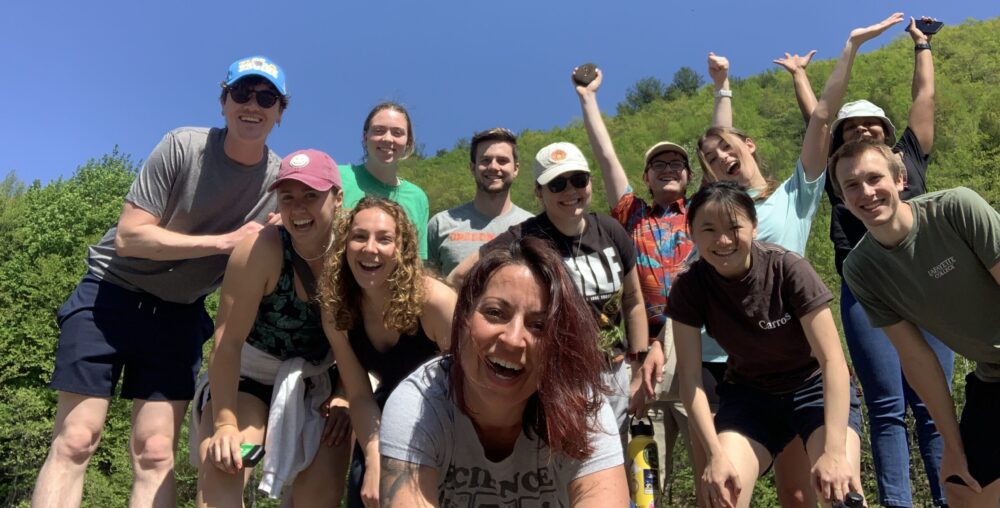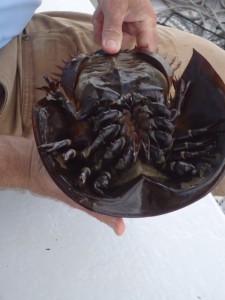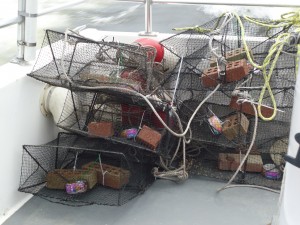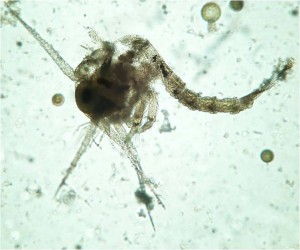MORE RARITAN ARTWORK
Danielle Sobol ’12, an art major and summer Mellon scholar, is contributing to our Raritan Bay research project by painting a series of watercolors representing the most abundant plankton, crustaceans, and fish that we see in the Bay. Last year, she painted 10 species of phytoplankton. These paintings have been floating from the ceiling of Kunkel Hall’s sitting room since January. This summer, she painted 14 additional paintings of copepods, cladocerans, rotifers, gastropods, polychaete worms, ctenophores, and crabs as part of her Mellon-supported work. The painting on the left is the warty comb jelly (Mnemiopsis leidyii), which we find in in very high abundance in Raritan Bay in July. In fact, this past week, concentrations were around 4 organims per liter (i.e., 8 of these comb jellies in a 2-liter bottle of coke!)! The warty comb jelly is a carnivore that eats zooplankton, fish larvae and other ctenophores. The painting on the right is a copepod, which are the most abundant animals in our monthly plankton collections. Copepods are small crustaceans with more than 10,000 marine species.
Be sure to check out the rest of Danielle’s paintings in Kunkel Hall in September!
THE SEARCH FOR CHINESE MITTEN CRABS CONTINUES
Alex Pong ’13 is studying the abundance and distribution of the Chinese Mitten Crab (CMC), an invasive species, in the Raritan River Basin. Since there is very little information on New Jersey populations of this species, we have been searching in the freshwater and oligohaline segments of the river for the CMC over the past few weeks with no sightings. Yesterday, we deployed 12 traps at our 6 sampling stations in the polyhaline Raritan Bay to see what we find! I’ll keep you posted!
Yes, that IS cat food that we’re using as bait!
CRAB ZOEA FOUND!
Crabs do not begin life as the macroscopic forms with claws that we all know and love! Crab eggs hatch into zoea larvae that drift in the ocean currents as plankton. As the juvenile crab grows in size, it goes through a series of molts. At each molt, more segments are added and the feathered appendages are replaced by clawed limbs. We have been sampling and identifying the plankton in Raritan Bay, NJ for over a year, and since this system is full of crabs representing a number of different species, we expected to find crab zoea in the plankton samples. We were very disappointed not to find ANY for the first 14 months of our research in Raritan Bay…until this past June when we were able to identify the larval stages of at least 2 different species of crabs. Yay!




